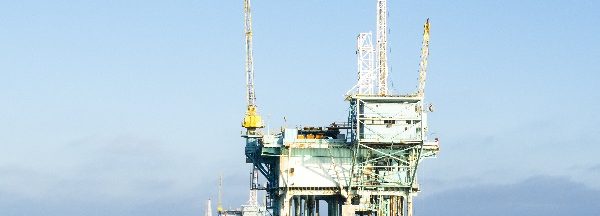About 23% of world’s oil supply comes from offshore wells and platforms, which due to their location are subjected to corrosion at all times. Marine environment is mostly known for large amounts of sea salt present in both water and air and that can be dangerous for the oil wells and platforms. As world can’t stop getting oil offshore, the only good solution is to properly protect the steel constructions that make the wells and that’s where specialised, chemical coating systems come into play.
Protecting oil platforms against sea salt
Sea salt creates many problems for oil platforms offshore, as it is present not only in the water itself but in humid air and wind as well. Corrosion in such places is more severe than anywhere else, as the combined influence of sea salt, changing temperature, sun exposure, oxygen and moisture affects steel structures much quicker. One of the main ideas to control the damage done by the environment is to use corrosion resistant metals and non-metal materials, but there are areas that require using metals with protective coatings instead
Chemical protective coatings are used in the industry for every situation where a steel structure needs to be reinforced, renovated or protected from corrosive environment from the start. For oil platforms, the coatings must be fully resistant to sea salt and usually require longer preparation process to properly secure steel.
Resin coating systems for offshore oil platforms
As most companies like DAAS Group who specialise in steel coatings are prepared to protect steel against the worst of conditions, the coating systems they choose use more than one layer of chemical protectant. The coats themselves are effective mostly due to their ingredients though – they’re made with red lead, strontium chromate, or basic lead silicon chromate pigments, contain zinc or strontium chromate, and are usually finished with thermoplastic resins to protect from corrosion, abrasion and other damage that can occur on an offshore platform.
Loading the coatings with zinc dust makes the steel resistant to abrasion and impact, but the zinc itself has to be protected against acids and alkalis, which is why chemically resistant resin topcoats are used on top of the actual anti-corrosion coatings. With sea salt being present both in air and under water, making sure corrosion is not the only factor the structures are being protected against is the key to success and longer lifespan for offshore constructions.
Resin has become one of the best mediums for creating viable, resistant coatings for steel structures thanks to its properties once the resin is cured. Using both thermoplastic or thermosetting resins means that despite close contact with water at all times, the resin can be cured properly and provide great protection to steel structures and first layers of protective coatings that are good for corrosion protection, but not very durable.
